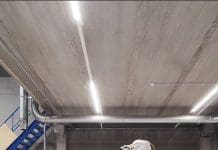Malcolm Kent, Technical Consultant to the Construction Equipment Association gives an update on the progress towards new engine emissions legislation…
You might be thinking that you have heard enough of machinery salesmen telling you about European emissions legislation and why that means their Stage IV machines have to be more expensive than the last ones, but there is more in the pipeline. We have been reporting for some time on the plans for a European Stage V and we now have a pretty clear idea of where we are heading, but first, a bit of background.
European air quality is a problem
The member states of the European Union signed up a long time ago to make sure that the air that the people breathe is clean enough. They agreed limits for pollution levels in the air and agreed a timetable for delivery. Now, plans are one thing, but in reality can be different. Many of the member states, including the UK for some areas, are in breach of their obligations and are facing the prospect of massive fines. This is leading to huge pressure to do as much as possible to improve air quality by reducing emissions. Any company looking to work on major developments in London will be aware of the new rules on emissions from sites and the need to do assessments of dust emissions and introduce control measures where necessary. That also carries over to machinery with diesel engines.
London Low Emission Zone
The controls in London were introduced via the ‘Supplementary Planning Guidance’ issued in August 2014 and make planning approval dependent on a set of conditions including the emission control levels of the machinery used in the construction phase. The requirements are as follows:
The “emission stage” dates are complex and are different depending on engine power. Also, due to various details of the engine emission laws, there is no simple check as to what stage of engine is in a machine based on its manufacturing year, so a more careful check might be necessary. The dates for single-speed engines, such as are often installed in compressors and generator sets, are different again. Overall, due to this complexity, there are real concerns about how well the London boroughs will understand what is in a machine and be able to enforce the planning conditions correctly.
Negotiations are under way to allow some exemptions from the rules but at the time of going to press this was not finalised.
All the pressure about air quality has led to the view in some quarters that as much as possible must be done. It is well understood that pollution from on highway engines adds up to a great deal more than the off-highway sector, but the view is that a contribution to improvement is required from off-highway too. No matter that diesel emission levels have been reduced by 96% over the fifteen years between Stage I and Stage IV: we have to make inroads on the remaining 4%.
Ultra-fine particles
One area of understanding that has developed over recent decades is the importance to health of ultra-fine particles in the emissions. All the off-highway engine emission limits so far, including the recently-introduced Stage IV, have been based on the total mass of pollutants emitted, with no regard for whether the particles are small or large. The on-highway sector has had controls on particle numbers (related to particle size) for some years now, which is why diesel particulate filters (DPFs) have been pretty much standard on vehicles for several years. So, where are we going with the next stage for off-highway diesels?
Stage V
After extensive debates, the European Commission have published their proposals for Stage V, but that is by no means the end of the haggling. The European Parliament and the Council of Ministers now get the chance to get their teeth into it and to propose amendments. The three parties will then go through a process to agree on the final text of the law. However, the Commission proposal gives us a pretty good idea of what is going to be in the final package.
Firstly, the principle of minimising the emission of ultra-fine particles is transferring into the off-highway sector for all engines between 19 and 560kW. That means that, unless someone comes up with some cunning new technology pretty quickly, all machines between the equivalents of, roughly, excavators from 2.5 tonnes to 150 tonnes, will need particulate filters. Of course, there are a lot of machines in the market today with DPFs already installed. That is because different manufacturers have chosen different ways of complying with the recent emissions limits. Some have used urea injection (such as Ad Blue) without a DPF while others have done the opposite and others again have applied both. However, the stringency of Stage V will probably mean less diversity in the solutions applied. Almost everyone, perhaps actually everyone, will be applying both urea injection and a DPF.
Timing
It’s hard to be certain about when the new stage will come into force until the final legislation is published, but what is on the table now would mean that only Stage V engines can be built after the end of 2018 and engine powers other than 56kW to 130kW would be one year later. For machine manufacturers this means a huge crunch. They will need to engineer new engine installations for their full line-up of machines over a very short timescale. All production of pre-Stage V engines, from the smallest to the largest, will come to an end over a time span of just 12 months. That is going to consume an enormous amount of engineering resource.
Compressors and Gen-sets
The types of machines that will see the biggest changes are those which use constant speed engines. The definition of constant speed is strict – basically they are just on/off engines with no standby speed – but they are used in a great many generators and compressors. Although these engines come under the same law as variable speed engines, they have had different requirements up to now. Those constant speed engines currently regulated are still at Stage IIIA where the variable speed engines have gone through the changes of Stages IIIB and IV. However, from Stage V constant speed engines will have the same limits as variable speed engines and the introduction dates are the same too. That means that there will be a big jump in the technology applied to those engines and a much bigger jump in cost than is likely to be seen on variable speed engines.
The replacement engine bomb-shell
The one aspect of the proposed new legislation which is potentially the most worrying for machine owners is that it would prevent the manufacture of all non-Stage V engines from the date the new stage starts. That includes any intended as replacements for failed engines. Complete engine failures are quite rare nowadays but not completely unknown, especially as machines get older. Under the proposed legislation engine makers would be unable to manufacture old-spec engines to supply as replacements, meaning that the market would be reliant on reconditioned engines to keep machines going, but even then there would be legal and logistical obstacles to overcome. Given that the engine manufacturers do currently supply a moderate number of replacement engines for old machines it is hard to see how the gap will be filled. If it is not, it means that a machine with a failed engine could be scrap. That would to lead to a lot of unhappy conversations between machine owners and manufacturers’ dealers. I can hear it now: “I’m sorry Sir, but we can’t fix your engine. We can’t replace it either, but can I sell you a new machine instead?”
Industry groups are not taking this lying down and are pushing hard for the draft legislation to be amended to allow the continuation of the supply of like-for-like replacement of engines for older machines. This will go on for several months yet so it’s too early for us to know how this will pan out. We will have to wait and see.
Malcolm Kent
Technical Consultant
Construction Equipment Association
Tel: +44 (0)20 8253 4502
cea@admin.co.uk














